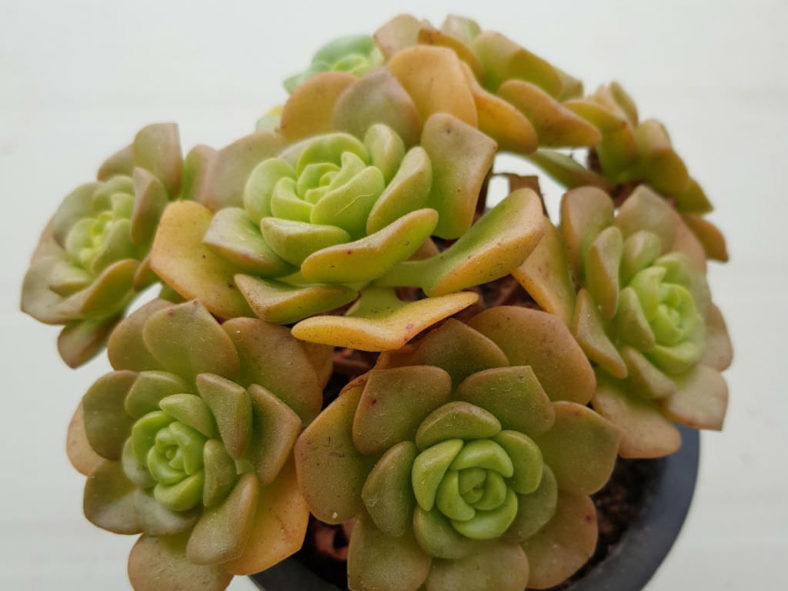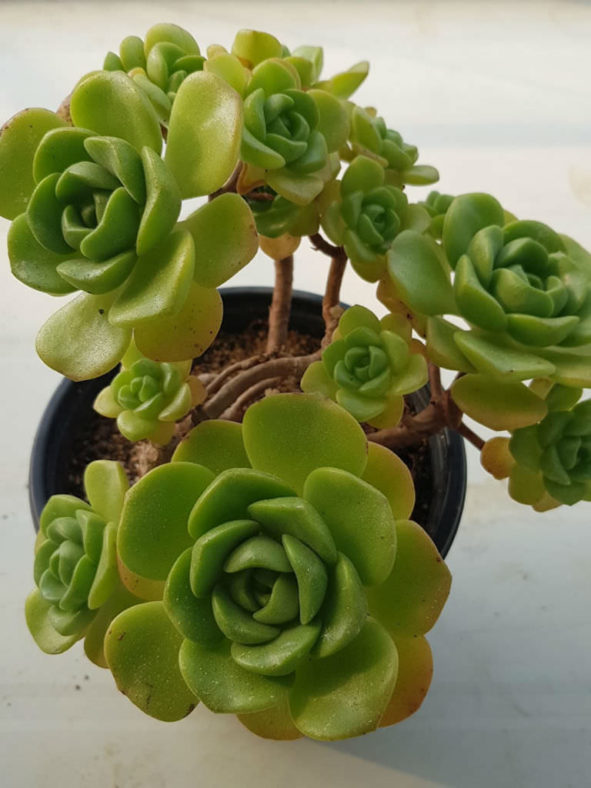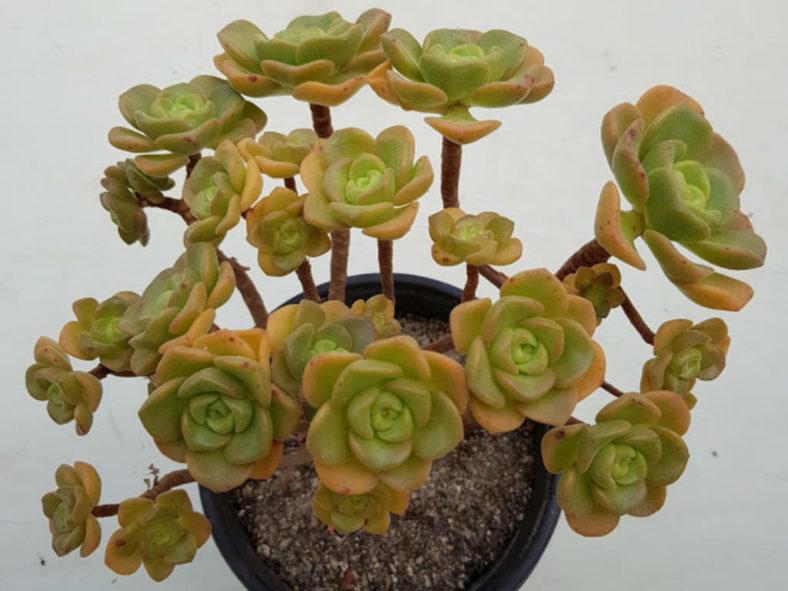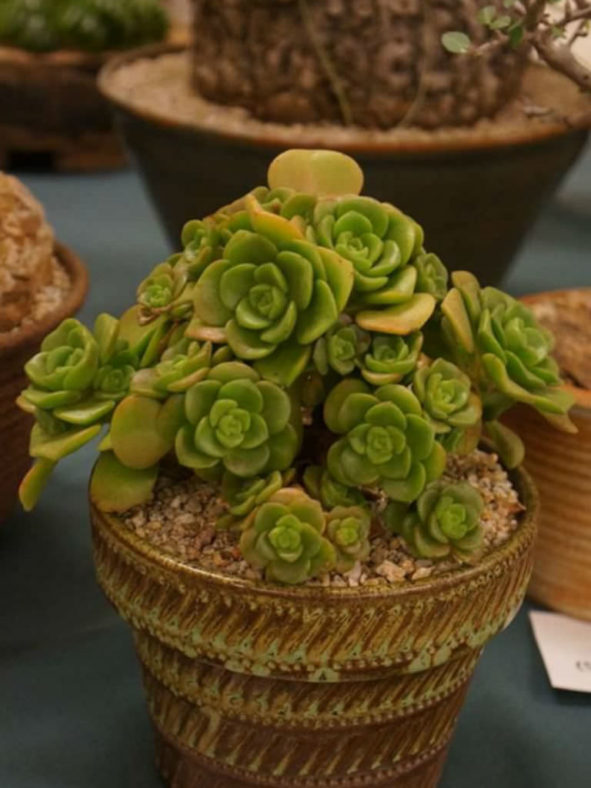Scientific Name
Aeonium 'Lily Pad'
Scientific Classification
Family: Crassulaceae
Subfamily: Sempervivoideae
Tribe: Aeonieae
Genus: Aeonium
Origin
Aeonium 'Lily Pad' is a hybrid that possibly results from a cross between Aichryson tortuosum var. bethencourtianum (formerly known as Aeonium bethencourtianum) and Aeonium lindleyi.
Description
Aeonium 'Lily Pad' is a succulent shrublet that forms flat, open rosettes of thick, bright green leaves at the end of the branches. It can grow up to 12 inches (30 cm) tall, while the rosettes can reach a diameter of 6 inches (15 cm). The rosettes produce offsets from the base of their lower leaves. In full sun, the older leaves show lovely shades of orange and yellow.
After a few years, a stalk with yellow to orange, star-shaped flowers emerges from each mature rosette, usually in spring.

How to Grow and Care for Aeonium 'Lily Pad'
Hardiness: USDA hardiness zones 9a to 11b: from 20°F (-6.7°C) to 50°F (10°C).
Aeoniums do not like hot or dry weather. Therefore, they may go dormant in summer and do not require any water except in very dry conditions. In extreme heat, their leaves will curl to prevent excessive water loss. In moist shade, they will continue growing, but their true growth season is from winter to spring, when temperatures are cool, ranging from 65°F to 75°F (18°C to 24°C), and the air is damp. In winter, water the soil whenever it has dried out—test by poking your finger into the soil an inch or 2 (2.5 to 5 cm). Too much moisture or allowing them to sit in wet soil will cause root rot.
A sandy loam or regular potting mix is preferable to a mix specifically designed for cacti and succulents, as Aeoniums require some moisture. If you grow them in containers, repot them with fresh potting soil every 2 to 3 years.
Feed during the growing season with a half-strength balanced fertilizer every month or so. Do not feed the plant while it is dormant.
Learn more at How to Grow and Care for Aeonium.
Links
- Back to genus Aeonium
- Succupedia: Browse succulents by Scientific Name, Common Name, Genus, Family, USDA Hardiness Zone, Origin, or cacti by Genus
Photo Gallery
Click on a photo to see a larger version.


